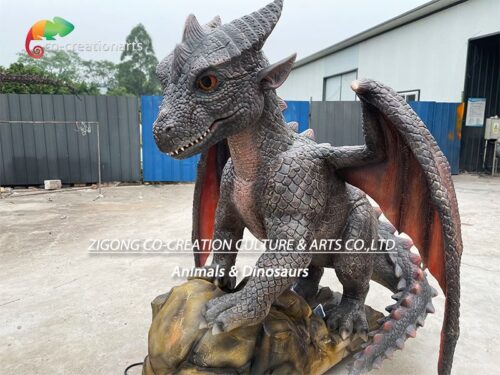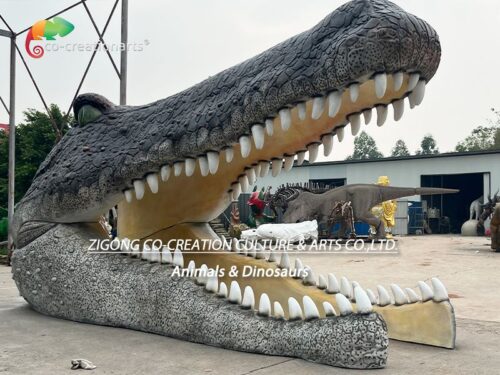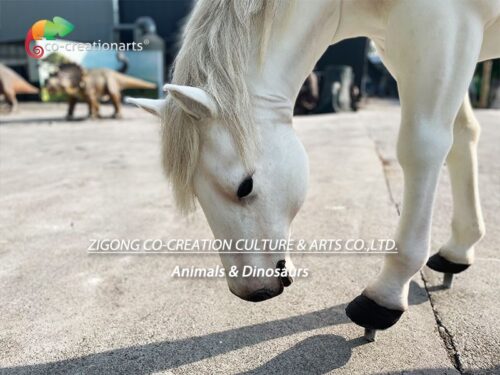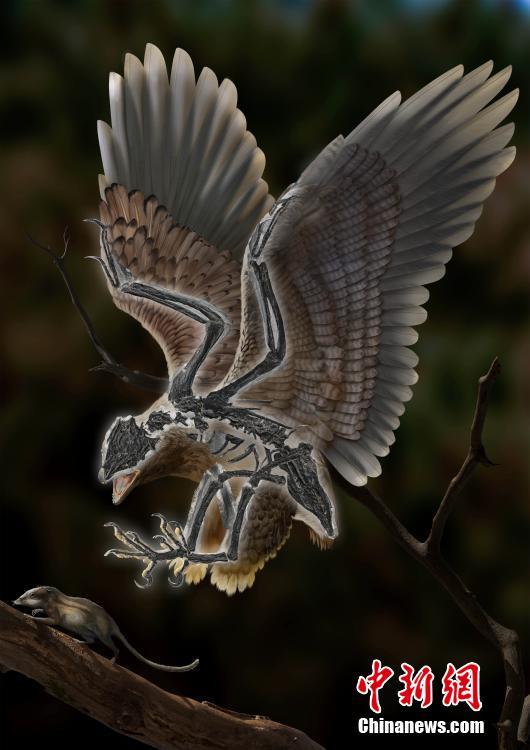
It has been a consensus that birds evolved from dinosaurs, and the evolution process of birds, especially how their skulls and bodies evolved independently, has long attracted much attention. Chinese scientists have discovered a new fossil of a basal bird species of the Femornithidae in the Jehelhe Biota (135-120 million years ago), a Cretaceous bird with a dinosaur skull and a strange body. They name it “cratonite Zhu” and reveal the adaptive evolution of the skull, scapula and monatarsus of early birds through in-depth study. Wang Min and Li Zhiheng of the Institute of Vertebrate Paleontology and Paleoanthropology, Chinese Academy of Sciences (CAS), co-authored the paper, which was published online on the night of January 2 (Beijing time) in the international journal Nature Ecology and Evolution. The picture shows restoration of craton and ravening Zhu. China News Service post Zhao Chuang cartography
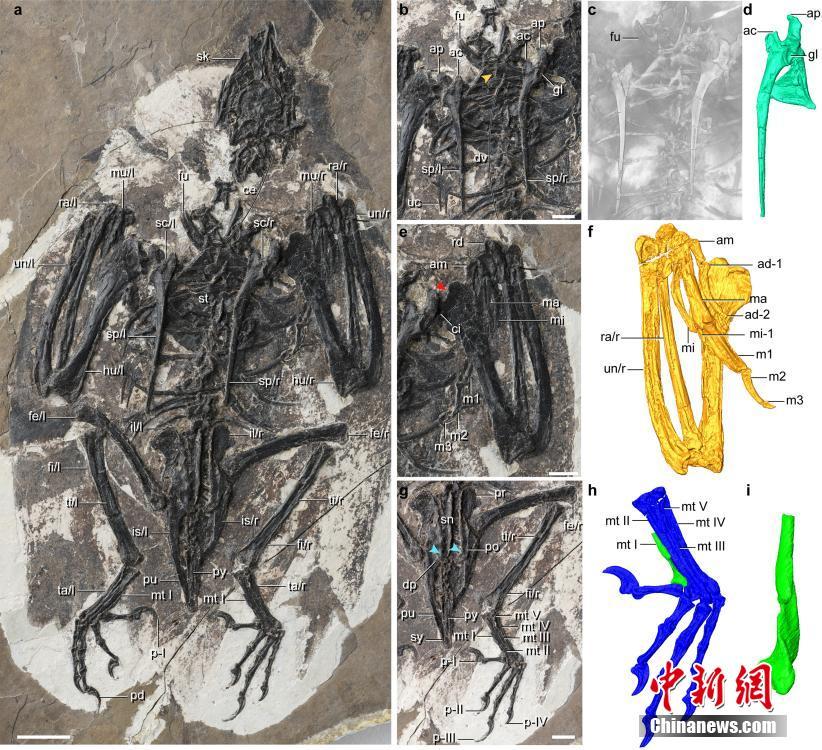
A specimen of clatonian sinisterite is shown here. China News Service Wang Min and Li Zhiheng
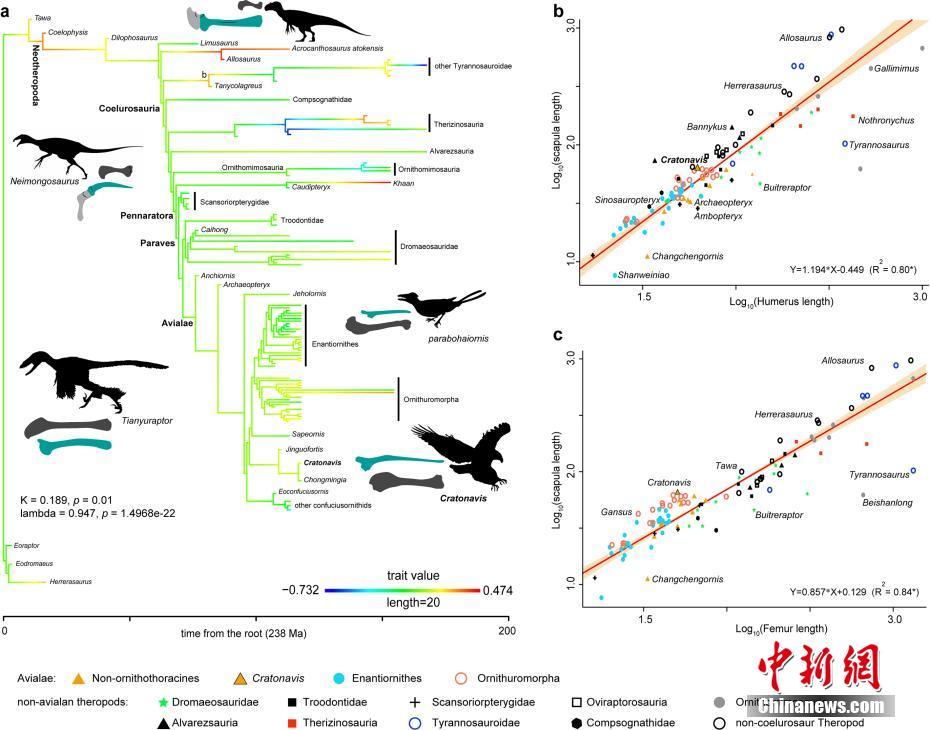
The picture shows the evolution of the scapula during the dinosaur-bird evolution. China News Service send Wang Min for photo
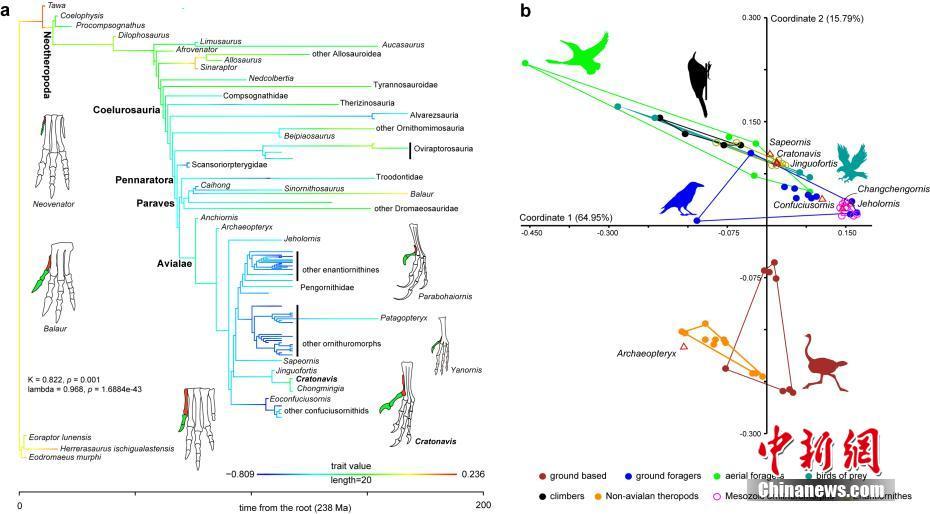
The picture shows the evolutionary path of the first metatarsal during the dinosaur-bird evolution. China News Service send Wang Min for photo

